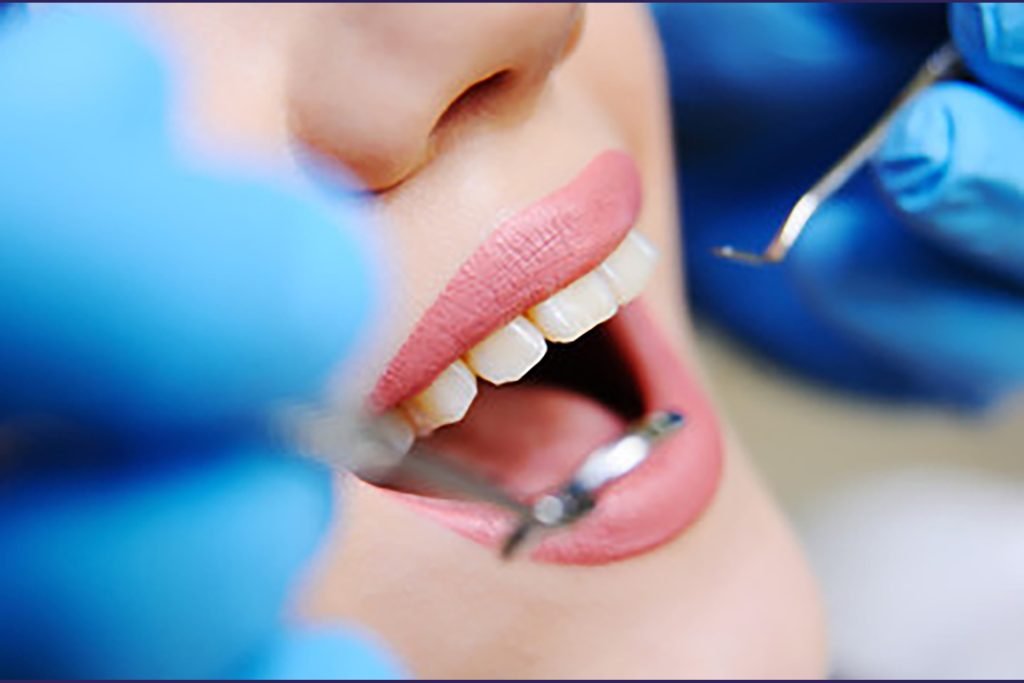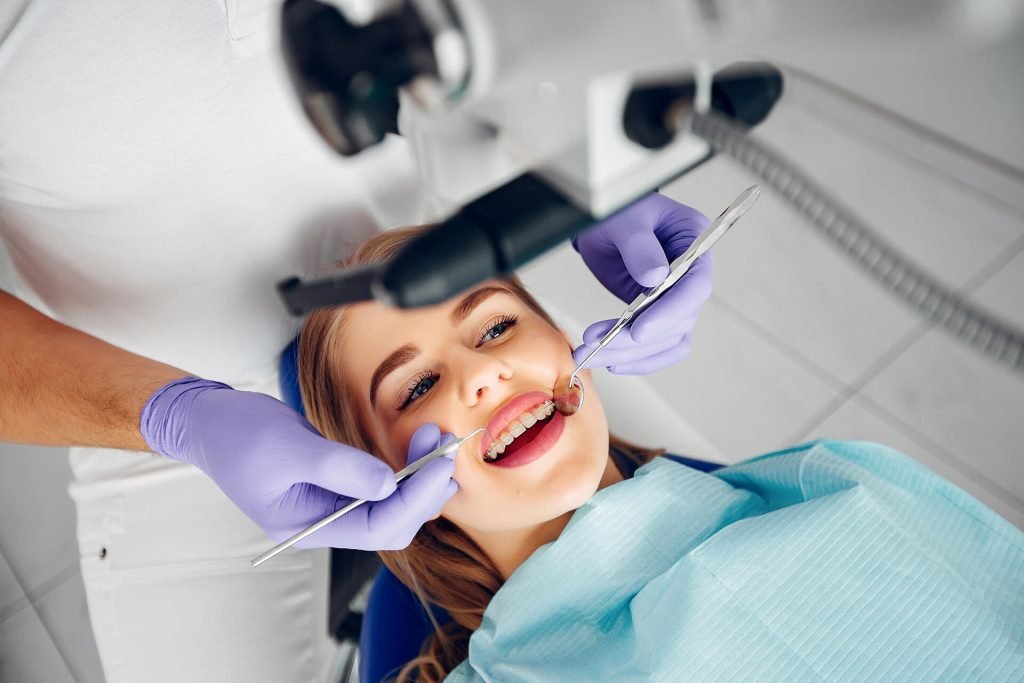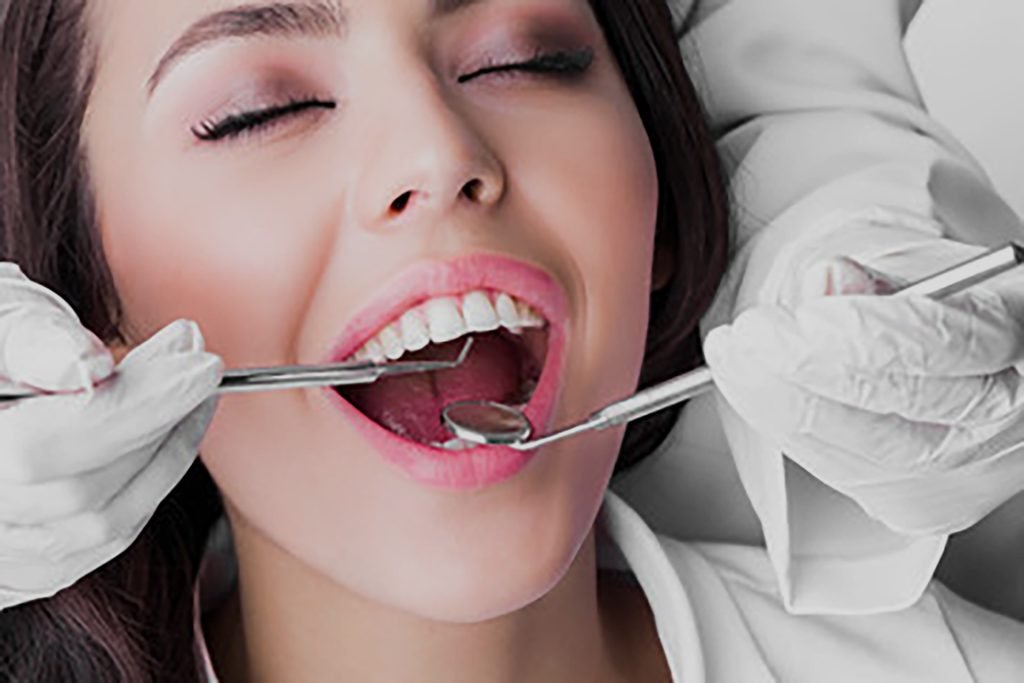Oral Prophylaxis

Dental cleaning, also known as prophylaxis or teeth cleaning, is a common dental procedure performed by dental hygienists or dentists to remove plaque, tartar (calculus), and stains from the teeth. It is an essential part of maintaining good oral hygiene and preventing dental problems such as cavities, gum disease, and bad breath. The dental cleaning process typically involves the following steps: Physical Examination The dental hygienist or dentist will visually examine your mouth to check for any signs of oral health issues such as cavities, gum disease, or oral cancer. Plaque and Tartar Removal Using specialized tools such as scalers and curettes, the dental professional will carefully remove plaque and tartar from the surfaces of your teeth, both above and below the gumline. Plaque is a sticky film of bacteria that forms on teeth and can lead to tooth decay and gum disease if not removed regularly. Tartar is hardened plaque that cannot be removed by brushing and flossing alone. Cleaning and Polishing After plaque and tartar removal, the teeth are polished using a gritty toothpaste-like substance and a high-powered electric brush. This helps remove surface stains and smoothens the tooth surfaces, making it more difficult for plaque to accumulate. Flossing The dental hygienist may also floss your teeth to ensure that any remaining plaque or debris between the teeth is removed. Fluoride Treatment (Optional) In some cases, a fluoride treatment may be applied to the teeth to help strengthen the enamel and prevent tooth decay. Overall, dental cleaning is a preventive procedure that helps keep your teeth and gums healthy and contributes to your overall oral health and well-being. It is typically recommended to undergo dental cleanings every six months as part of a regular dental care routine, although the frequency may vary depending on individual oral health needs.
Understanding the Interconnectedness of Mental Health, Smoking, and Oral Health

The relationship between mental health, smoking, and oral health is multifaceted, with each aspect influencing and exacerbating the others. This interconnectedness underscores the need for comprehensive approaches to healthcare that address these interrelated issues. Mental Health and Smoking The link between mental health conditions and smoking behavior is well-documented. Many individuals turn to smoking as a coping mechanism to alleviate symptoms of anxiety, depression, and stress. Nicotine, the addictive component of cigarettes, provides temporary relief from psychological distress, perpetuating a cycle of dependence. Consequently, individuals with mental health disorders are more likely to smoke, leading to adverse health outcomes. Smoking and Oral Health The detrimental effects of smoking on oral health are numerous and severe. Smoking is a significant risk factor for gum disease, tooth decay, and oral cancer. The chemicals in tobacco smoke interfere with the normal function of gum tissue, leading to inflammation and infection. Additionally, smoking inhibits saliva production, which plays a crucial role in protecting teeth and gums from decay and disease. Mental Health and Oral Health The relationship between mental health and oral health is bidirectional. Mental health disorders can contribute to poor oral health outcomes, as individuals may neglect oral hygiene practices due to symptoms such as fatigue, apathy, or impaired cognitive function. Conversely, poor oral health can exacerbate mental health challenges, leading to feelings of low self-esteem and social isolation. Addressing the Interconnected Issues To effectively address the interconnected issues of mental health, smoking, and oral health, holistic approaches to healthcare are essential. Integrated interventions that consider the interplay between these factors are needed to promote overall well-being. This includes providing access to mental health services, smoking cessation programs, and oral health promotion efforts. Public health initiatives aimed at reducing smoking rates and promoting oral hygiene should prioritize vulnerable populations and address underlying social determinants of health. Conclusion Understanding the interconnectedness of mental health, smoking, and oral health is crucial for promoting comprehensive health and well-being. By addressing these interrelated issues through integrated interventions and systemic reforms, we can improve health outcomes and enhance the quality of life for individuals and communities alike.
The Importance of Good Oral Hygiene: A Comprehensive Guide

Introduction: Good oral hygiene is the cornerstone of overall health and well-being. It encompasses daily habits, dietary choices, regular dental visits, and avoidance of harmful habits. This comprehensive guide explores the importance of good oral hygiene, its fundamentals, dietary considerations, regular dental check-ups, harmful habits to avoid, the link between oral health and overall well-being, and tailored approaches for different age groups. The Fundamentals of Good Oral Hygiene: Daily brushing, flossing, mouthwash, and tongue cleaning are essential components of good oral hygiene. Brushing twice a day with fluoride toothpaste removes plaque and prevents cavities. Flossing removes food particles and plaque between teeth that brushing alone cannot reach. Mouthwash helps kill bacteria and freshens breath, while tongue cleaning reduces bacteria buildup, preventing bad breath. The Role of Diet in Oral Health: Diet plays a significant role in oral health. Sugary foods promote bacteria growth, leading to tooth decay and gum disease. Calcium and vitamin D are essential for strong teeth and bones, so incorporating dairy products, leafy greens, and fortified foods is crucial. Drinking plenty of water helps wash away food particles and keeps the mouth hydrated, preventing dry mouth and reducing the risk of cavities. Regular Dental Check-ups and Cleanings: Regular dental check-ups and cleanings are vital for maintaining good oral health. Professional dental care can detect and treat issues early, preventing them from worsening and requiring more extensive interventions. The frequency of dental visits varies depending on individual needs and risk factors, but biannual check-ups are generally recommended. Avoiding Harmful Habits: Certain habits can harm oral health. Smoking increases the risk of gum disease, tooth loss, and oral cancer. Limiting alcohol consumption reduces the risk of oral cancer and gum disease. Nail biting and teeth grinding can cause enamel erosion, tooth fractures, and jaw pain, so finding alternative coping mechanisms is important. The Link Between Oral Health and Overall Well-being: Oral health is closely linked to overall well-being. Poor oral health is associated with an increased risk of heart disease, stroke, diabetes, and mental health issues. Maintaining good oral hygiene can improve overall health and quality of life. Oral Hygiene for Different Age Groups: Oral hygiene practices vary depending on age. Children should start brushing as soon as their first tooth appears and visit the dentist regularly for check-ups and preventive care. Teens should continue good oral hygiene habits and be mindful of braces or other orthodontic treatments. Adults should prioritize oral health to prevent issues like gum disease and tooth loss. Elderly individuals may face unique challenges, such as dry mouth and tooth sensitivity, requiring tailored oral care strategies. Conclusion: Good oral hygiene is essential for overall health and well-being. By following the fundamentals of oral hygiene, maintaining a healthy diet, scheduling regular dental check-ups, avoiding harmful habits, understanding the link between oral health and overall well-being, and tailoring oral care practices to different age groups, individuals can enjoy a lifetime of healthy smiles. It’s never too late to prioritize oral health and reap the benefits of a confident, beautiful smile.
What is Good Oral Hygiene?

Good oral hygiene results in a mouth that looks and smells healthy. This means: Your teeth are clean and free of debris Gums are pink and do not hurt or bleed when you brush or floss Bad breath is not a constant problem If your gums do hurt or bleed while brushing or flossing, or you are experiencing persistent bad breath, see your dentist. Any of these conditions may indicate a problem. Your dentist or hygienist can help you learn good oral hygiene techniques and can help point out areas of your mouth that may require extra attention during brushing and flossing. How is Good Oral Hygiene Practiced? Maintaining good oral hygiene is one of the most important things you can do for your teeth and gums. Healthy teeth not only enable you to look and feel good, they make it possible to eat and speak properly. Good oral health is important to your overall well-being. Daily preventive care, including proper brushing and flossing, will help stop problems before they develop and is much less painful, expensive, and worrisome than treating conditions that have been allowed to progress. In between regular visits to the dentist, there are simple steps that each of us can take to greatly decrease the risk of developing tooth decay, gum disease and other dental problems. These include: Brushing thoroughly twice a day and flossing daily Eating a balanced diet and limiting snacks between meals Using dental products that contain fluoride, including toothpaste Rinsing with a fluoride mouth rinse if your dentist tells you to Making sure that your children under 12 drink fluoridated water or take a fluoride supplement if they live in a non-fluoridated area.

